5 SEO Monitoring Tools | Track Website & Content Performance
Topic: SEO
Published:
Written by: Bernard Huang
Marketers need a handful of SEO tools to monitor website health and content performance so they can not only maintain but improve organic search rankings, site traffic, and ROI from digital strategies. These include:
Content inventory tools (what we offer!) to track live website pages and check real-time SEO scores.
Technical SEO tools to audit your site for back-end or content-based issues.
Google Search Console to monitor technical SEO, improve desktop and mobile usability, and stay ahead of potential problems.
Rank trackers to see where your site appears for target keywords and watch rank changes.
Backlink management tools to see which websites link to you and how backlinks impact rankings and SEO.
Local SEO solutions to track local rankings and optimize your Google Business profile.
So we put together this guide with recommended solutions for each category — we talk about Clearscope’s Content Inventory, Screaming Frog’s SEO auditing tool, Google’s free SEO analytics apps, Ahrefs, and Semrush. By the end, you’ll know exactly what you need to cover your bases and how to take the next steps with each solution.
Note: Clearscope is our product. We’re proud of what we’ve built and believe we have the best content optimization and monitoring platform on the market. Request a personalized demo.
Clearscope: Real-time content inventory dashboard
Track SEO scores for all of your published website content.

Clearscope Content Inventory to monitor on-page SEO
Clearscope’s Content Inventory lets you create a “live” dashboard listing all of your published website pages — you can add landing pages, product pages, or blog posts and keep track of everything that exists on your site. (We offer custom plans to accommodate unlimited links.)
To create your inventory, add the web page URLs and target keywords — then, the page details are saved to your inventory with the current SEO score.
For example, in the screenshot above, you can see:
NerdWallet’s web page on finding the best credit cards (with metrics like word count, clicks, and SEO value)
The page’s target keyword — “best credit cards”
The current SEO score — A+
Our AI constantly monitors SERP changes, algorithm updates, and competitor content so it can tell you how well page content is optimized for target keywords, and scores automatically adjust so you can pop in the dashboard and check current content scores.
You can also add Tags with URLs to save specific details about content. (In the example above, the user added tags to display the author's name and content type.)
Read more: How to Create a Content Inventory & Perform a Content Audit
Content Inventory makes it easy to monitor and manage all of the content that lives on your site:
You can see what already exists on your site to avoid keyword cannibalization.
Since you know what content lives on your site, you can also find opportunities to re-optimize existing web pages for (related) secondary keywords.
You know when content starts to become “outdated” (when content scores slip) so you can strategically schedule updates — instead of slotting posts in at random or waiting for performance to take a hit.
You can audit and troubleshoot website content to ensure all web pages are optimized for target keywords.
By creating and staying on top of your Content Inventory, you can maintain a fully-optimized site — at least from a content perspective; we’ll talk about technical and off-page SEO later — and put page content in the best position to perform well (i.e., reach and engage the intended audiences).
Then, when it comes time to refresh content, Clearscope also offers SEO drafts to guide updates. Drafts include takeaways from SERP research, competitive analysis tools, and a list of headings and terms to use in content. These provide clarity during edits because you can see exactly what’s required to improve SEO; you can perform a general edit on the post (update information, add new links or images) and effectively optimize content.
In addition to Content Inventory and SEO drafts, our solution also includes keyword research tools to help content marketers find and schedule topics for writers.
To learn more about our platform, packages, and pricing, get in touch with our team to schedule a free demo. You can also get started with the Essentials Plan to begin building your inventory and explore our platform’s features.
Screaming Frog: Website crawler & technical SEO tool
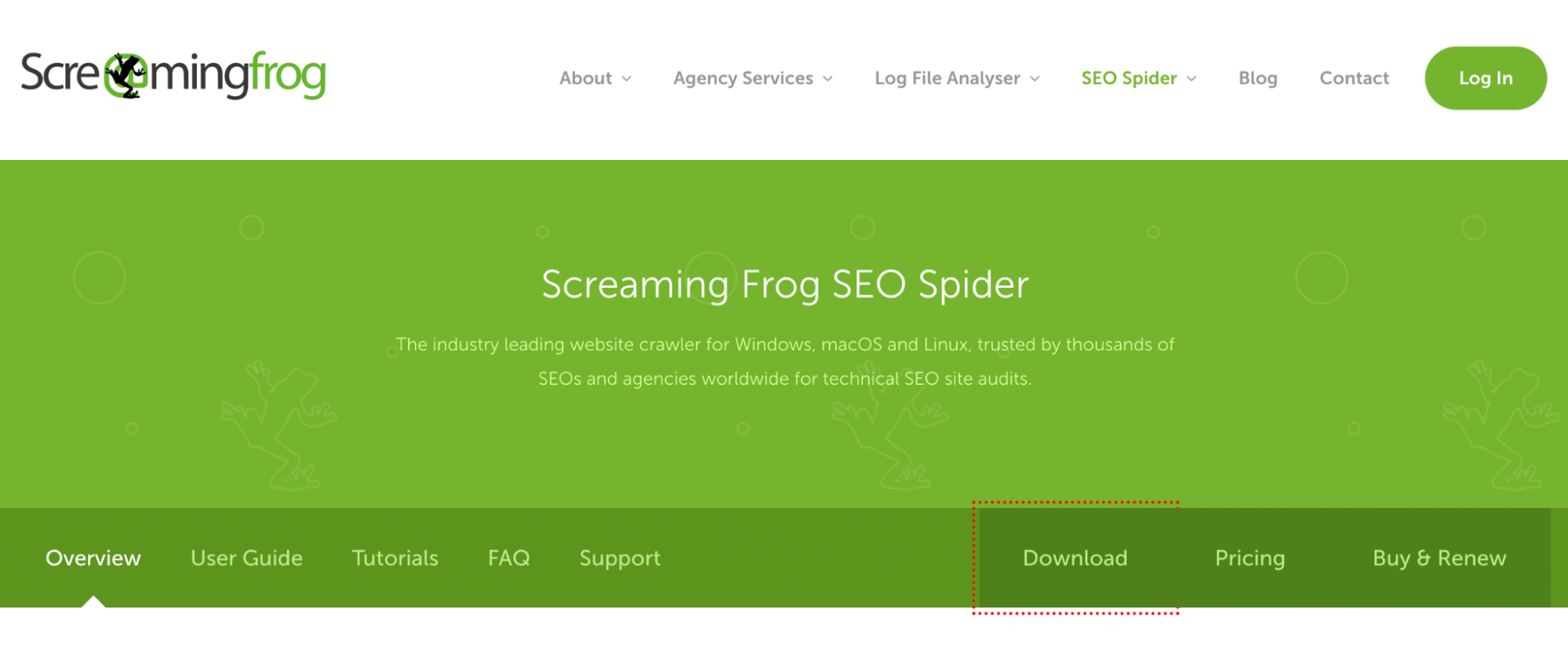
Screaming Frog free SEO tool to perform site audits
Screaming Frog’s technical SEO tool is handy for assessing current website health and determining where to improve performance. This tool discovers SEO issues that hurt search rankings so you can make the right updates. It can:
Analyze your site map to identify issues with crawlability or page indexing.
Identify bots and directives that block page URLs.
Evaluate internal links and provide recommendations to improve URL structure.
Review page titles and meta descriptions.
Find duplicate content across site pages.
Audit redirects.
Detect broken links.
Extract information from individual site pages — you can configure the crawler to grab a variety of data (and you can get super in-depth here).
You can use Screaming Frog’s free crawler to do a one-time “clean up” — then monitor site health via Google Search Console — but they also have a feature to schedule periodic crawls so you can automatically receive reports on a regular basis.
Screaming Frog's “starter plan” (crawls up to 500 URLs) is free to use and works well for individuals and small businesses just establishing their online presence.
They also offer a paid plan for teams with larger sites (crawls unlimited URLs) that costs $259 per year (with discounts if you purchase multiple licenses).
Screaming Frog provides free tutorials and website resources so you can learn how to use the crawler and gather report data. That said, the solution can be a little complex to use if you don’t have a background in technical SEO — you may need insight from an expert to understand reports and make changes.
Google Search Console: Monitor technical SEO & avoid issues
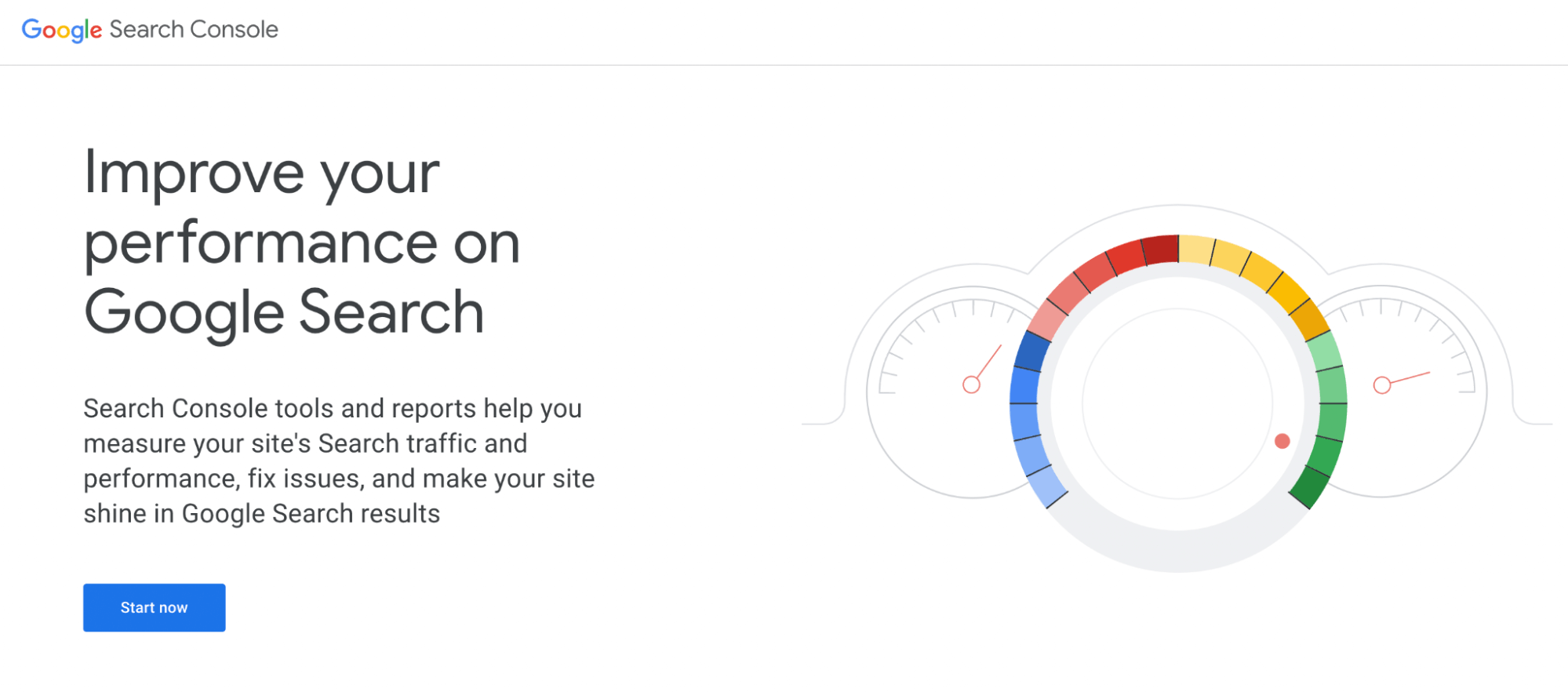
Google’s free digital marketing & SEO analysis tool
We recommend Google Search Console (GSC) — also referred to as Webmaster Tools — for ongoing site and SEO monitoring. This tool is free to use for anybody with a Google account, and it provides real-time data about your website’s SEO and search engine performance, with clear recommendations on how to address problem areas.
In other words, it tells you what Google requires to rank your site highly in search engines and how to get up to par.
With Google Search Console, you can:
Dig into page and video indexing — see which pages/videos are indexed and troubleshoot non-indexed pages (again, Google will tell you why items aren’t indexed so you can make changes).
Submit and update your site map.
Remove links from Google search.
Review HTTPS URLs.
Check core web vitals and user experience metrics.
Measure and increase page speeds.
Improve desktop and mobile usability.
Inspect site pages.
View (high-level) performance metrics — Google shows you the queries your site ranks for, average rank position, impressions, and page views.
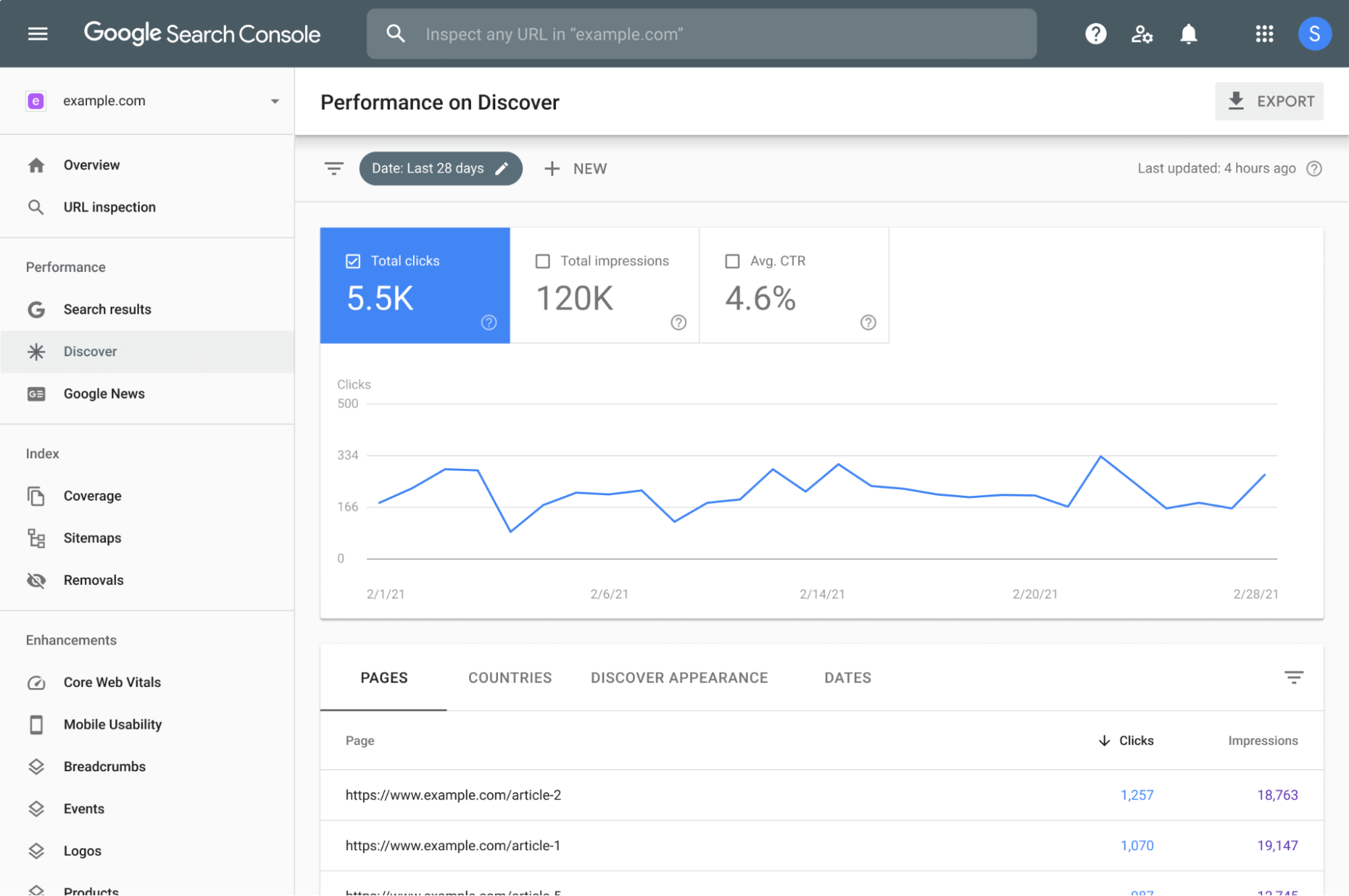
Google Search Console dashboard (Source: Google)
The tools provided by Google Search Console let you address back-end issues so you can maintain a “healthy” (SEO-friendly) site — which is the foundation for all page rankings.
If your site isn’t set up to perform well in search engines, you can’t expect to see your content in the top rank positions.
As mentioned, GSC is completely free, so you can access your dashboard and check site metrics any time you wish; you can also set alerts to receive emails about flagged items and site activity.
Bonus: Google Analytics

Google Analytics to measure page performance & SEO metrics
Google Analytics (GA) complements GSC and allows you to monitor content performance: you can use GSC to address back-end issues, see how you perform in search engines, and see (high-level) site traffic — then you use GA to dig into site traffic, user activity, and individual page metrics.
Google Analytics offers a variety of SEO tools under one roof, and you can access this platform for free — they offer paid versions of their SEO solution, too, but many small and growing teams can use the free version without issue. You create your account by logging in with your Gmail, then Google’s prompts walk you through set-up.
In Google Analytics, you can:
View real-time site activity — see who’s active on your site and on what pages.
Check traffic sources and see where users are coming from — paid ads, organic traffic, and referral sites.
Learn about your website visitors (where audiences are located, how they find you, how they access and engage with your site).
Create and track conversions so you can measure specific goals (like trial or newsletter sign-ups, demo requests, sales, etc.) from content.
Determine which web pages are “most successful” — draw in the most content and have high conversion rates — and which pages need attention.
Reporting on traffic and conversions lets you measure ROI from content and understand which content pieces and SEO strategies are effective; then, you can adjust strategies as you learn and better prepare for the future.
Staying on top of content also prevents issues from falling to the wayside — you can see which pages aren’t drawing in traffic or conversions and determine how to address low performers.
Note: Google also offers other SEO and marketing software like Keyword Planner and Google Trends to explore keyword ideas and build content plans; Looker Studio to graph out website traffic; Google Ads to manage PPC campaigns, and more.
Ahrefs: To monitor keyword rankings, backlinks & referring domains
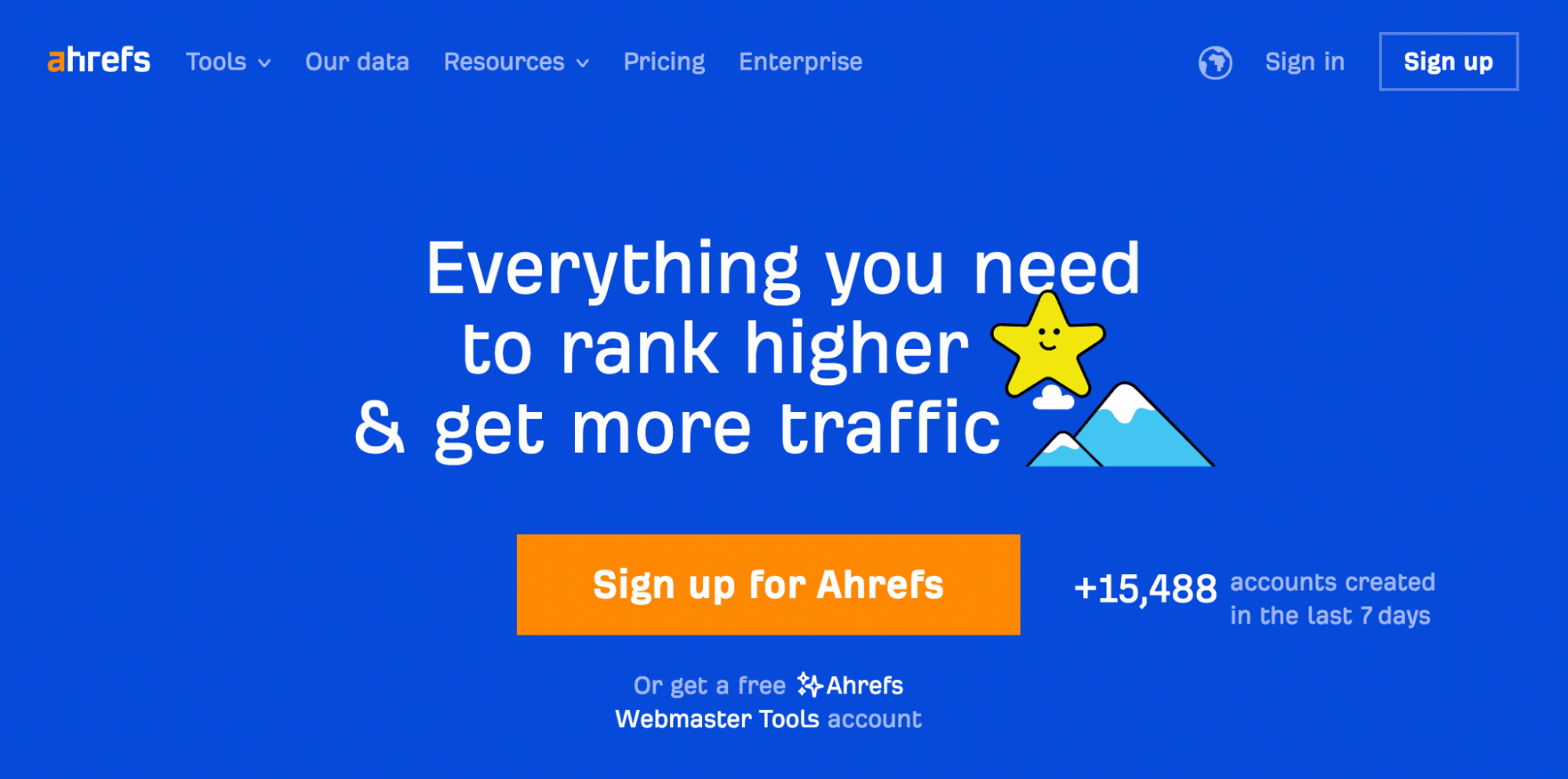
Ahrefs SEO platform to manage rank tracking and link building
Ahrefs is our recommended solution to monitor website rankings and backlinks. It’s popular for its Rank Tracker tool that lets you see rank positions for specific keywords, but we also use Ahrefs to manage backlinks and referring domains.
In addition, Ahrefs has strong competitor analysis and keyword research tools — you can explore keyword ideas (check search volumes, difficulty scores, and CPCs), see which keywords competitors rank for, and identify content gaps.
All of Ahrefs’s tools are user-friendly and easy to learn, but we’ll explain how to get set up.
First, in Rank Tracker:
Plug the site URL that you want to monitor — you can create separate projects to track rankings for multiple sites.
Schedule site audits and specify how often you want Ahrefs to crawl your site (every day, every week, once a month).
Add the target keywords.
Then Ahrefs generates a report listing all the tracked keywords, the site page that ranks for each query, and the current rank position. The report also shows if page content appears in SERP features like snippets, People Also Ask, or video previews.
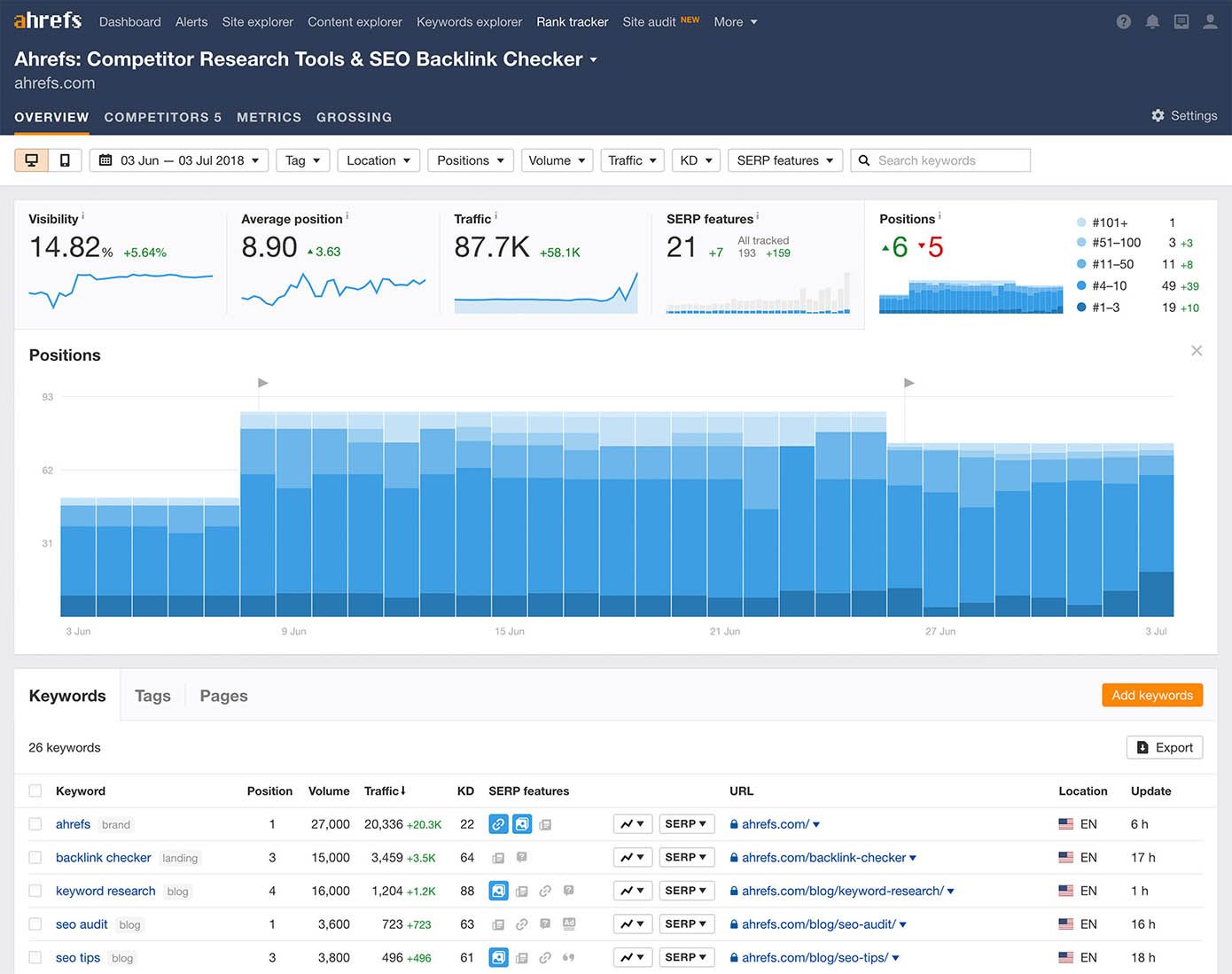
Ahrefs Rank Tracker (Source: Ahrefs)
You can check the report at any time to see the most current rank position, and Ahrefs keeps a history of rank changes so you can track movement and address pages that show declines.
Read more: How Long Does It Take to Rank in Google with SEO Techniques?
After that, you can use Site Explorer to perform backlink analysis: just paste your site URL to review the report and check your backlink profile. Reports also show traffic sources and organic keywords.

Ahrefs backlink tracking tool (Source: Ahrefs)
The backlink checker shows you a list of websites and web pages that link to your site (even the anchor text that’s used to link to content).

Ahrefs backlink results page
You can use this data to audit backlinks and understand how referring sites impact your domain authority — then, you can remove toxic links and adjust link building efforts to improve DA and rankings.
Pro Tip: You can also plug competitors’ sites in the Site Explorer to review their backlinking strategies, see keywords they rank for, and check additional SEO data.
Ahrefs offers tiered packages, so you can get started by choosing the plan that meets your requirements. Ahrefs also offers an “Ahrefs Academy” where you can learn how to use (and fully take advantage of) all available site features.
Read more: How to Get Good Backlinks: A Step-by-Step Guide
Semrush: For local SEO & monitoring brand mentions online
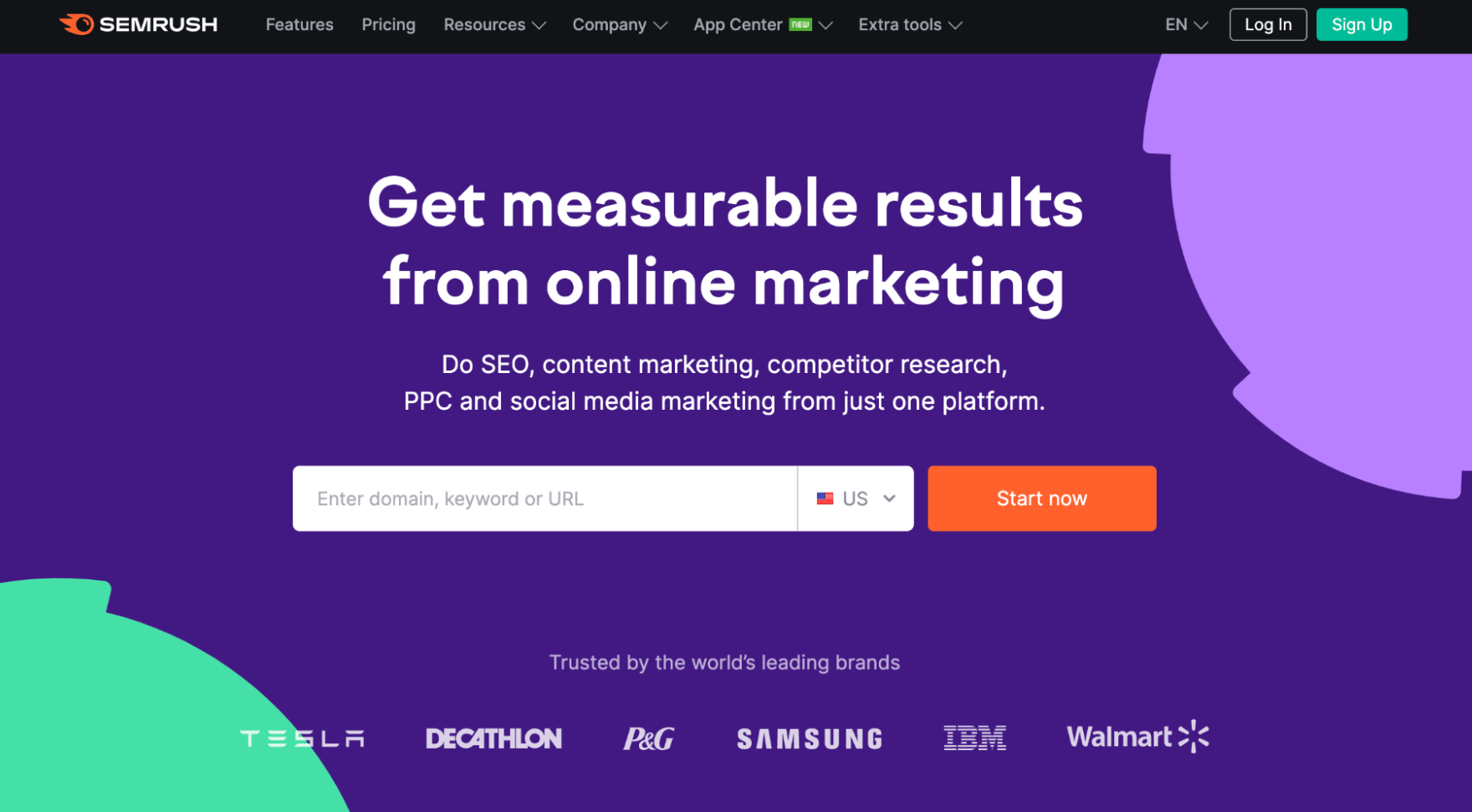
Semrush online marketing tools to monitor SEO performance
Finally, Semrush is a comprehensive online marketing and SEO software that offers many “SEO Toolkits,” so you can choose which features you want to access (and pay for only what you require from the software).
Semrush offers:
SEO Toolkit — so you can perform technical audits, track SERP performance, review the organic keywords your site (and competitor’s sites) rank for, and check backlink profiles.
SEO Writing Assistant & Content Marketing Tools — to discover keyword ideas and write optimized website content.
Competitor Analysis & Market Research Tools — to dig into competitors’ strategies and identify opportunities to outperform top-ranking sites.
Advertising Toolkit — to manage PPC campaigns and Google Shopping campaigns and optimize ad spend.
Social Media Tools — to schedule social posts and monitor brand mentions.
We recommend Semrush for its local SEO tools; this toolkit combines features from the social media, content marketing, and SEO toolkits, and it includes a listing management feature.
Semrush’s Local Toolkit lets you monitor online business directories, local rankings, and brand reputation; plan social media campaigns; set up notifications to alert you when somebody mentions your brand online — so you can manage your online presence and attract the right target audiences.
Semrush is a popular tool because they have a la carte solutions for virtually any marketer and offer packages for teams that want to combine toolkits. One-man teams and small businesses can learn the software, and it’s a go-to for SEO agencies and digital marketing teams.
Semrush’s SEO tools are generally user-friendly, so there isn’t a long learning curve. However, the platform gets mixed reviews when it comes to usability; some feedback suggests the platform tries to include too much (and certain features lack as a result), navigation is overwhelming, and most teams don’t understand how to use it to its fullest potential.
That’s why it’s best to pick and choose what you need from the software; for example, Semrush doesn’t have super comprehensive content marketing tools, but it gets good reviews in terms of local SEO features.
You can get started in Semrush by choosing the package that interests you; they also offer a free trial so you can explore the software before purchasing.
Final notes
With these solutions in your back pocket, you can effectively monitor on-page, off-page, and technical SEO to enhance site performance and content rankings. These are the most popular solutions in their categories and are trusted by beginners and experienced teams to support SEO efforts.

SEO Content Development: Our Guide to SEO Content Creation
Our guide covers everything you need to know about SEO content development — how to build a content plan, write SEO content & see results from content.
Read moreEnterprise SEO Tools to Support Content & Boost Site Rankings
Our post talks about six enterprise SEO tools to guide digital strategies, help you see better ROI from content marketing, and report on the success of projects.
Read moreWhat is SEO value and why it matters
Understand what SEO value is, how it’s calculated, its key metrics, and how it can demonstrate the ROI of SEO in your digital marketing efforts.
Read more